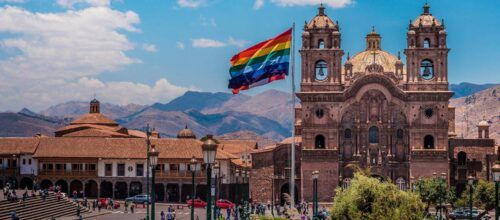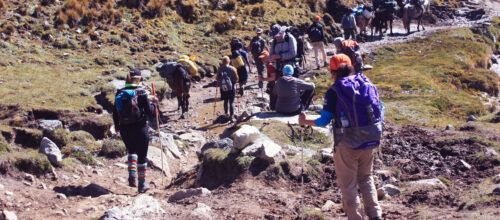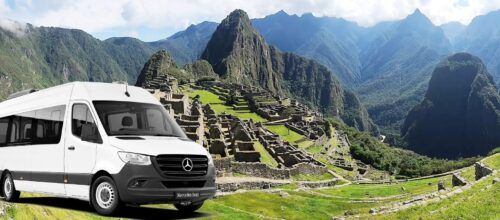The Incas appreciated the Sacred Valley in the Peruvian Andes for its special geographical and climatic qualities. The valley consists of numerous rivers that descend through creeks and valleys, and it has numerous archaeological monuments and indigenous peoples. It was one of the main points of production for the wealth of their lands and place where the best maize in Peru occurs. Beautiful colonial towns created in the Sacred Valley spread and now display their crossbreeding in architecture, art, and culture. There are the villages of Chinchero and its weavers, Pisac and its craft fair, Urubamba and its cosmopolitanism, Ollantaytambo, with its Inca fortress and living people, and Machu Picchu.
Moray Maras with its dazzling salt mines, in these territories, the Sacred Valley, several communities have created products of rural tourism and experiential tourism that amaze friends and strangers. Each of them is a world in itself, and together compose a unique way to discover the most traditional region of the South American Andes.
Overview
The Sacred Valley, also known as the Urubamba Valley, belongs to the region in Peru’s Andean highlands. This area attracts attention for its stunning scenery, rich history, and vibrant culture. Let me know if you need further assistance!
Location
- Region: Cusco Region
- Provinces: Mainly within the provinces of Urubamba, Calca, and Cusco.
- Geographical Feature: The Andes Mountains flank the valley that stretches along the Urubamba River.
Geography
- Elevation: Ranges from about 2,000 meters (6,600 feet) to 3,000 meters (9,800 feet) above sea level.
- Terrain: The valley features fertile plains, terraced hillsides, and rugged mountains, providing a diverse landscape.
Historical Significance
- Inca Empire: The Sacred Valley was an important agricultural, spiritual, and political center for the Inca civilization. The Incas took advantage of the valley’s fertile land to cultivate crops, especially maize and potatoes.
- Archaeological Sites:
- Pisac: Known for its well-preserved terraces and impressive ruins.
- Ollantaytambo: Features massive stone structures and was a strategic military, agricultural, and religious center.
- Chincheros: Famous for its circular terraces, believed to have been used for agricultural experimentation.
Cultural Significance
- Quechua Communities: The valley is inhabited by Quechua-speaking communities who maintain traditional customs and crafts.
- Festivals and Traditions: Local festivals, traditional music, dance, and artisanal markets are integral to the region’s cultural fabric.
Tourism
- Popular Destination: The Sacred Valley is a major tourist attraction, often visited as part of the journey to Machu Picchu. It offers a range of activities, including trekking, mountain biking, and exploring Inca ruins.
- Villages and Towns: Key towns such as Pisac, Urubamba, Ollantaytambo, and Chinchero serve as bases for exploring the valley. Each town has its unique charm and attractions.
Natural Beauty
- Scenic Landscapes: The valley’s picturesque landscapes, with the Urubamba River winding through green fields and snow-capped peaks in the background, make it a photographer’s paradise.
- Biodiversity: The diverse ecosystems support a variety of flora and fauna, adding to the valley’s natural appeal.
Practical Information for Visitors
- Acclimatization: Given the high altitude, it is advisable to spend a few days acclimatizing in Cusco or the valley itself before engaging in strenuous activities.
- Travel Tips: Visitors should bring comfortable walking shoes, sun protection, and layers of clothing to adjust to the varying temperatures.
The Sacred Valley is a captivating destination that offers a blend of natural beauty, historical intrigue, and cultural richness, making it a must-visit for travelers to Peru.
Itinerary
Pisac town and archaeological park:
You can still see the magnificent and ancient architecture in the construction of the Inca city as well as in agricultural terraces. Our Pisac tour lasts approximately 2 hours before returning to the valley to visit the colorful and traditional local market where you can buy traditional textiles at low prices. After our visit to the market, our journey continues through the beautiful Sacred Valley, across the valley to see the cornfields, our next destination is Urubamba where we will arrive at approximately 13:00 pm to enjoy lunch (optional) one local restaurants..
Pisac Archaeological Site: One of the most significant Inca sites in the Sacred Valley, the Pisac ruins include:
- Terraces: Extensive agricultural terraces that demonstrate advanced Inca farming techniques.
- Temple Complex: This area includes temples, altars, and ceremonial baths. The Temple of the Sun is particularly noteworthy for its fine stonework.
- Intihuatana: A ritual stone associated with astronomical observations, similar to those found at Machu Picchu.
- Military Area: Fortifications and watchtowers that highlight the strategic importance of Pisac.
Pisac Market: The town is famous for its vibrant market, which operates daily with the largest market days on Sundays. The market offers a wide variety of local handicrafts, textiles, pottery, and fresh produce. Colonial Church: The colonial church of San Pedro Apostol, located in the main square, is an example of the blending of Inca and Spanish influences.
Ollantaytambo living inca village.
This place was built with pink granite rocks and is another great example of Inca architecture. Here the lithic blocks have a weight of (90 tons) and were used as part of the Temple of the Sun. Here is a small description of the place.
Ollantaytambo Archaeological Site: The ruins include impressive terraces, temples, and military structures. Notable features include:
- Temple of the Sun: Large stone monoliths and finely crafted stonework demonstrate the advanced engineering skills of the Incas.
- Terraces: The agricultural terraces are a testament to the Inca’s sophisticated farming techniques.
- Storehouses (Qollqa): These structures were used to store food and other supplies.
Old Town: The village itself retains much of its original Inca layout, with narrow cobblestone streets and traditional stone buildings. It is one of the few places where people still live in original Inca homes. Pinkuylluna: These ruins are located on the hill opposite the main archaeological site and were used as storehouses. The hike to Pinkuylluna offers excellent views of Ollantaytambo.
Chincheros Traditional Town.
Located at 3,800 meters, where we will observe. Archaeological Site: The Inca ruins at Chinchero include well-preserved terraces, stone walls and trapezoidal portals. These ruins offer a glimpse into the sophisticated architectural and engineering skills of the Incas. Colonial Church: The Church of Our Lady of Monserrat, built at the beginning of the 17th century, is a highlight of Chinchero. It has beautiful murals and a richly decorated interior that combines Andean and Spanish artistic elements. Textile Market: Chinchero is famous for its traditional weaving techniques. The local market and several weaving cooperatives give visitors the opportunity to see demonstrations of traditional dyeing and weaving processes, and to purchase handmade textiles. After visiting this beautiful town we will return to the city of Cusco approximately 7:00 p.m.
Inclusions
SERVICE INCLUDES:
- Touristic bus.
- Professional guide.
- Lunch (optional)
NOT INCLUDED:
- Tourist ticket
- Lunch
- Additional costs.
Should Bring
YOU NEED BRING:
- thick jacket
- Camera
- Water
- Sunscreen
- Money to eat and to shop
Acomodation
Price
Price: Season 2025
Shared Service:
- Price per person U$. 50.00
- The approximate group is 15 people
Private & Personalized Service:
- Price per person U$ .150
- Minimum people 02 pax.

















